Virtual Consultations Available! Start Your Journey Today.
Schedule A ConsultationA classification system is only useful if it outlines a treatment plan.
Dr. Cruise
Breast tissue – under nipple/areola only
Nipple position – above border of pec. muscle
Lateral chest fold – tight, straight
Breast tissue – extends over chest fold
Nipple position – above border of pec. muscle
Lateral chest fold – tight, rounded
Breast tissue – extends over chest fold
Nipple position – above border of pec. muscle
Lateral chest fold – tight, rounded
Breast tissue – extends into axilla
Nipple position – >1.5 cm below border of pec. muscle
Lateral chest fold – small breast roll in front of arm pit
Breast tissue – extends into axilla
Nipple position – ≥ 2 cm below border of pec. muscle
Lateral chest fold – breast roll extends to the back of arm pit
Breast tissue – extends into axilla
Nipple position – ≥ 2cm below border of pec. muscle
Lateral chest fold – breast roll extends around to back
Type 1 gynecomastia is more commonly referred to as puffy nipples. Patients with puffy nipples will have tight skin. This allows the skin to wrap around the pectoralis border in a straight line, because there is little or no breast tissue blurring the muscle definition. In contrast, Type 2 gynecomastia typically has a breast lump or fatty tissue extending over muscle border. This causes chest fold rounding. In addition to the visible nature of growing tissue, many people with mild to moderate breast tissue growth will experience breast tenderness.

“Achieving optimal results and avoiding complications requires both expertise and a plan”
Dr. Cruise
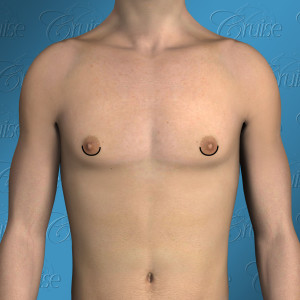

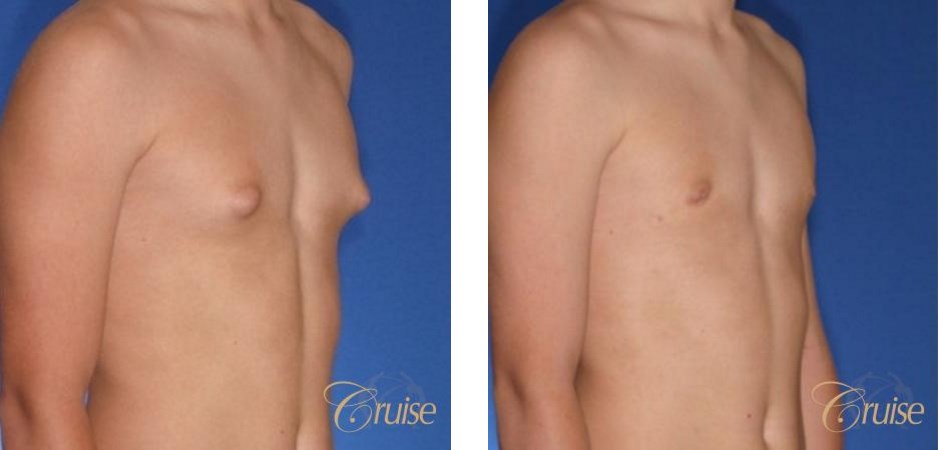
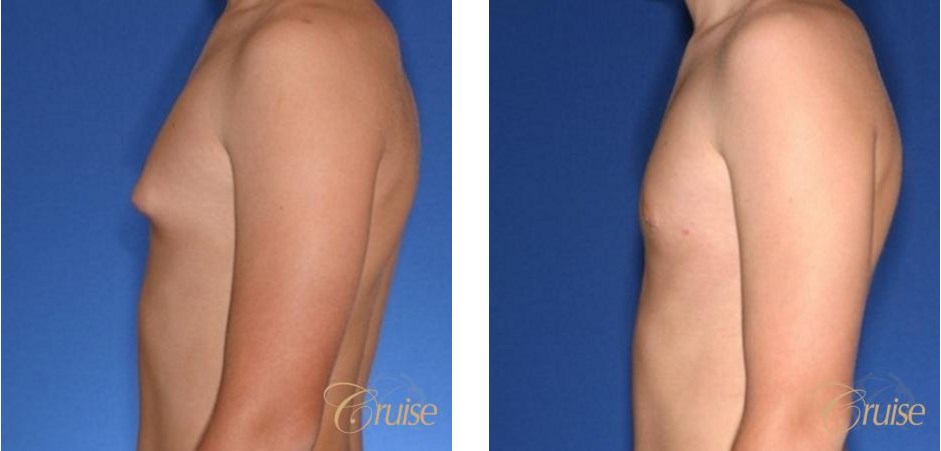
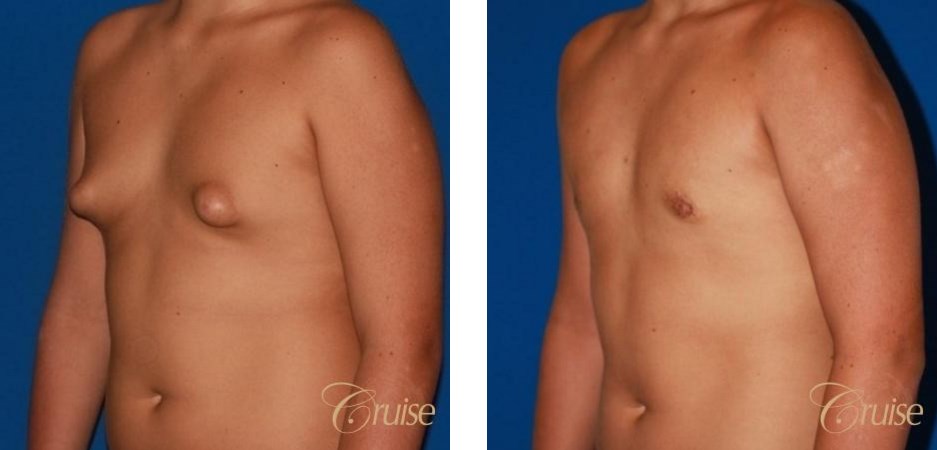
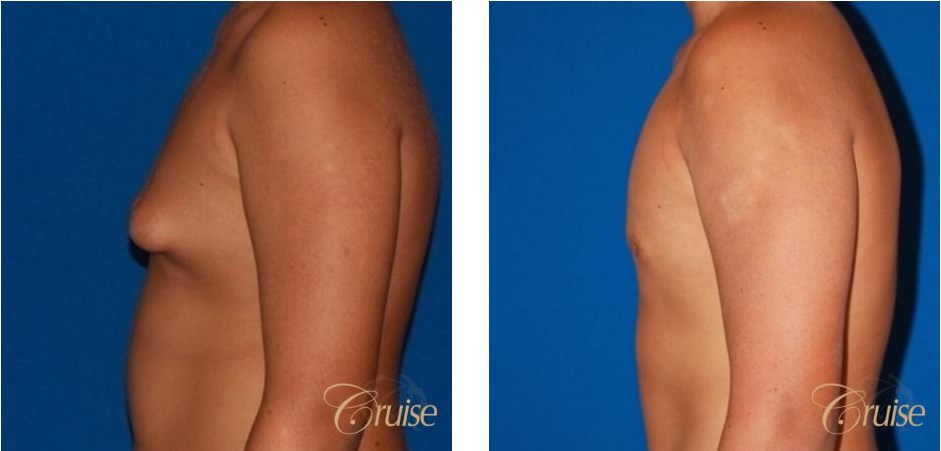
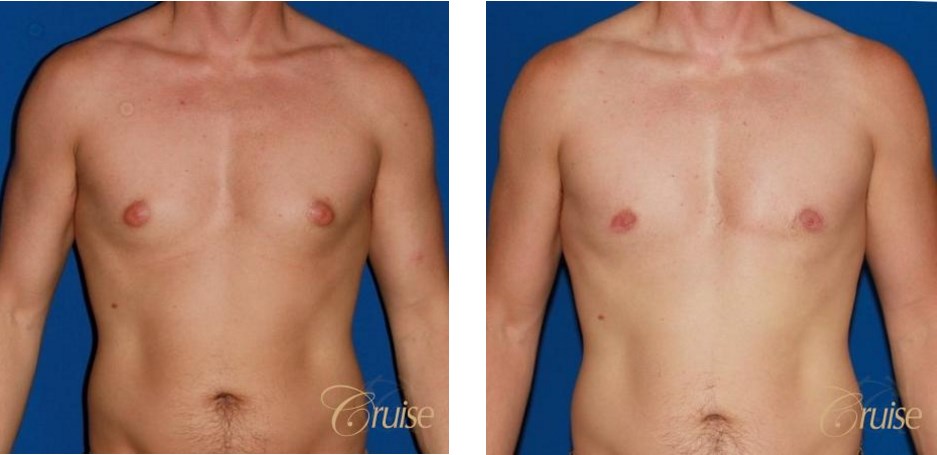
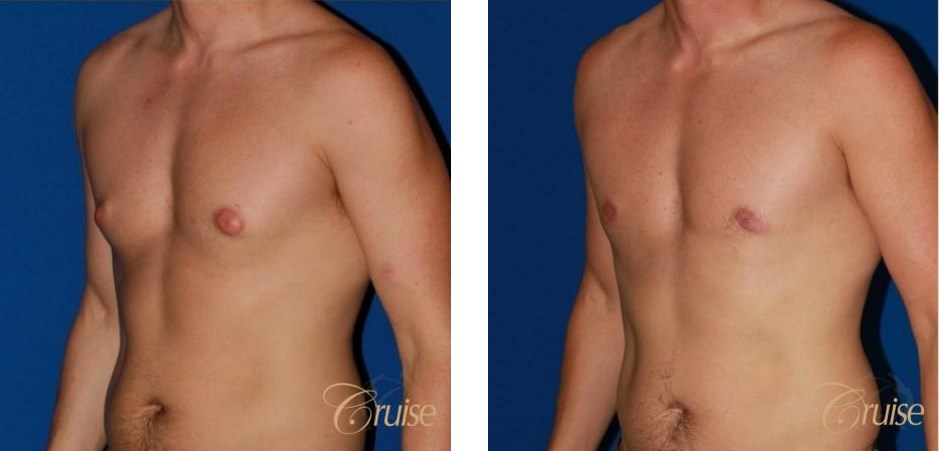
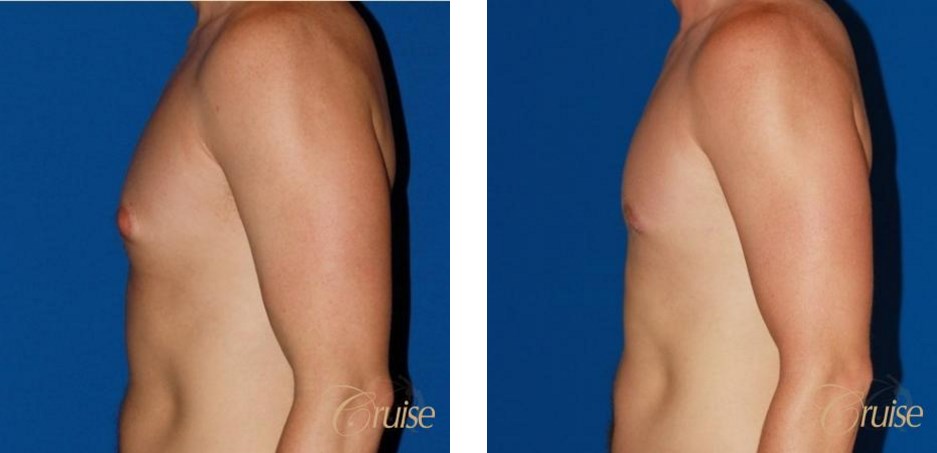
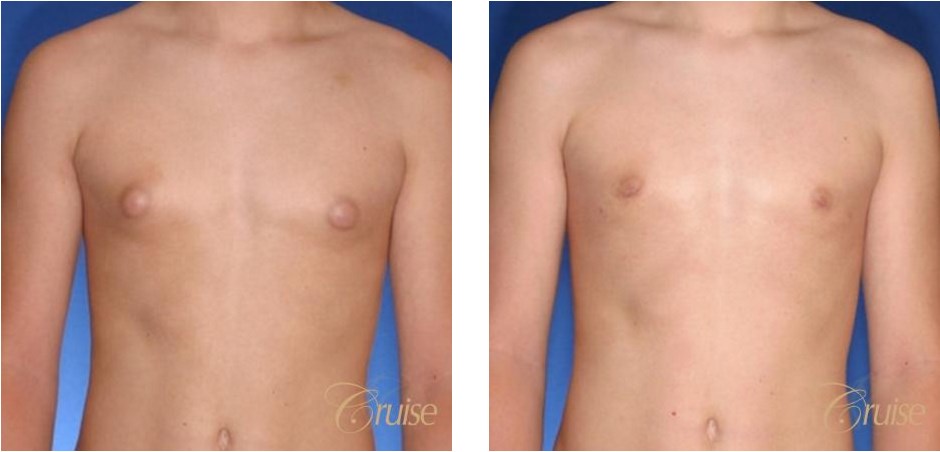
I felt embarrassed having an femininely shaped chest. I didn’t feel masculine and it caused me great anguish.
I avoided situations that required me to take my shirt off, like swimming. I would hunch my shoulders so that my shirt would drape over my chest, because I was afraid other people would notice my chest.
A friend of mine told me I had man-boobs and I immediately realized that other people noticed what I had seen all along. I immediately felt embarrassed and wanted to disappear.
I would wear loose fitting shirts and hunch my shoulders so that my chest wouldn’t protrude. I was unable to stick my chest out with pride (literally).
Try diet and exercise to see if you can reduce the appearance of your gynecomastia. If you’re still unhappy, research a competent surgeon. That’s the route I took and I was fortunate enough to find Dr. Cruise.
I did pursue gynecomastia surgery and the only regret I have is that I did not do it sooner. I am so pleased with the results that I can not wait for the summer so I can walk along the beach with my shirt off. The boost to my confidence has been enormous. I totally believe it was worth it. The biggest impact I’ve seen (besides my confidence) is that I’m able to stand up straight again without worry about my “man-boobs” protruding. Something as simple as standing up straight not only makes me look more confident, but I feel more confident.
Vincent, 25
